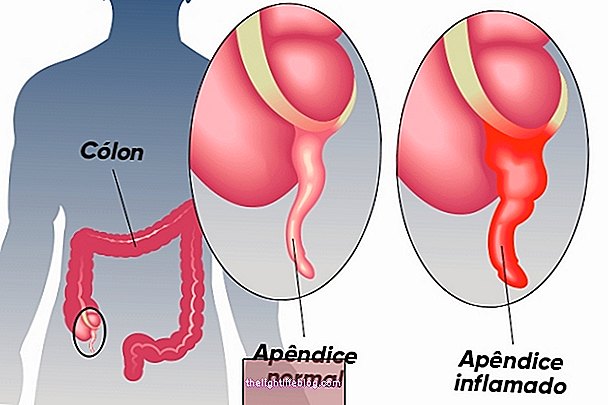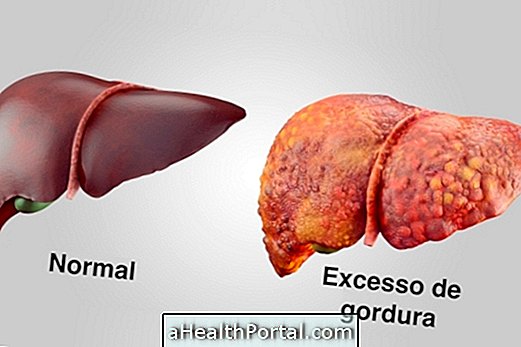Gliomas are brain tumors in which glial cells are involved, which are cells that make up the Central Nervous System (CNS) and are responsible for supporting neurons and the proper functioning of the nervous system. This type of tumor has a genetic cause, but it is rarely hereditary. However, if there are cases in the glioma family, it is recommended that genetic counseling be carried out in order to check for the presence of mutations related to this disease.
Gliomas can be classified according to their location, cells involved, growth rate and aggressiveness and, according to these factors, the general practitioner and the neurologist can determine the most appropriate treatment for the case, which is usually through surgery followed by chemo and radiotherapy.

Types and degree of Glioma
Gliomas can be classified according to the cells involved and location:
- Astrocytomas, which originate from astrocytes, which are the glial cells responsible for cell signaling, neuron nutrition and homeostatic control of the neuronal system;
- Epidendiomas, which originate in the ependymal cells, which are responsible for lining the cavities found in the brain and allowing the movement of the cerebrospinal fluid, the CSF;
- Oligodendrogliomas, which originate in oligodendrocytes, which are cells responsible for the formation of the myelin sheath, which is the tissue that lines nerve cells.
As astrocytes are present in greater amounts in the nervous system, the occurrence of astrocytomas is more frequent, with glioblastoma or grade IV astrocytoma being the most severe and common, which can be characterized by high growth rate and infiltrative capacity, resulting in several symptoms that can put a person’s life at risk. Understand what glioblastoma is.
According to the degree of aggressiveness, glioma can be classified into:
- Grade I, which is more common in children, although rare, and can be easily resolved through surgery, as it has slow growth and has no infiltrative capacity;
- Grade II, which also has slow growth but already manages to infiltrate brain tissue and, if the diagnosis is not made in the initial stage of the disease, it can become grade III or IV, which can put the person's life at risk. In this case, in addition to surgery, chemotherapy is recommended;
- Grade III, which is characterized by rapid growth and can be easily spread to the brain;
- Grade IV, which is the most aggressive, since in addition to the high rate of replication it spreads quickly, putting the person's life at risk.
In addition, gliomas can be classified as being of low growth rate, as is the case of grade I and II glioma, and of high growth rate, as is the case of grade III and IV gliomas, which are more severe due to the fact that the tumor cells are able to replicate quickly and infiltrate other sites of brain tissue, further compromising the person's life.

Main symptoms
The signs and symptoms of glioma are usually only identified when the tumor is compressing some nerve or spinal cord, and may also vary according to the size, shape and growth rate of the glioma, the main ones being:
- Headache;
- Convulsions;
- Nausea or vomiting;
- Difficulty maintaining balance;
- Mental confusion;
- Memory loss:
- Behavior changes;
- Weakness on one side of the body;
- Difficulty speaking.
Based on the assessment of these symptoms, the general practitioner or neurologist can indicate the performance of imaging tests so that the diagnosis can be made, such as computed tomography and magnetic resonance imaging, for example. From the results obtained, the doctor can identify the location of the tumor and its size, being able to define the degree of the glioma and, thus, indicate the most appropriate treatment.
How the treatment is done
The treatment of glioma is done according to the characteristics of the tumor, grade, type, age and signs and symptoms presented by the person. The most common treatment for glioma is surgery, which aims to remove the tumor, making it necessary to open the skull so that the neurosurgeon can access the brain mass, making the procedure more delicate. This surgery is usually accompanied by images provided by magnetic resonance and computed tomography so that the doctor can identify the exact location of the tumor to be removed.
After surgical removal of the glioma, the person is usually subjected to chemo or radiotherapy, especially when it comes to grade II, III and IV gliomas, as they are infiltrative and can be easily spread to other parts of the brain, worsening the condition . Thus, with chemo and radiotherapy, it is possible to eliminate tumor cells that were not removed through surgery, preventing the proliferation of these cells and the return of the disease.
Was this information helpful?
Yes No
Your opinion is important! Write here how we can improve our text:
Any questions? Click here to be answered.
Email in which you want to receive a reply:
Check the confirmation email we sent you.
Your name:
Reason for visit:
--- Choose your reason --- DiseaseLive betterHelp another personGain knowledge
Are you a health professional?
NoMedicalPharmaceuticalsNurseNutritionistBiomedicalPhysiotherapistBeauticianOther
Bibliography
- JOHN HOPKINS MEDICINE. Glioma. Available in: . Accessed on 23 Oct 2019
- BRAZILIAN SOCIETY OF NEUROLOGY. And now? Getting started after receiving a diagnosis of a glioma. Available in: . Accessed on 23 Oct 2019
- PARANÁ ONCOLOGY INSTITUTE. Be alert to signs that may indicate a glioma. Available in: . Accessed on 23 Oct 2019
- MAYO CLINIC. Glioma. Available in: . Accessed on 23 Oct 2019
- NYU LANGONE HEALTH. Types of Glioma & Astrocytoma. Available in: . Accessed on 23 Oct 2019
- UK CANCER RESEARCH. Glioma. Available in: . Accessed on 23 Oct 2019
- GOODENBERGER, McKinsey L .; JENKINS, Robert B. Genetics of adult glioma. Cancer Genetics. 613-621, 2012
- GOMES, Renata N. Analysis of the profile of prostanoids and their role in controlling cell migration in glioblastoma. Doctoral Thesis, 2016. Institute of Biomedical Sciences, University of São Paulo.
























